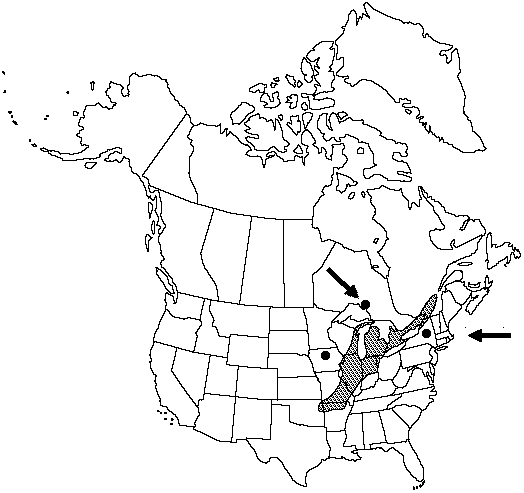Difference between revisions of "Selaginella eclipes"
Canad. J. Bot. 55: 366. 1977.
imported>Volume Importer |
imported>Volume Importer |
||
| Line 49: | Line 49: | ||
|publication year=1977 | |publication year=1977 | ||
|special status=Endemic | |special status=Endemic | ||
| − | |source xml=https:// | + | |source xml=https://bitbucket.org/aafc-mbb/fna-data-curation/src/2e0870ddd59836b60bcf96646a41e87ea5a5943a/coarse_grained_fna_xml/V2/V2_146.xml |
|genus=Selaginella | |genus=Selaginella | ||
|subgenus=Selaginella subg. Stachygynandrum | |subgenus=Selaginella subg. Stachygynandrum | ||
Latest revision as of 20:21, 5 November 2020
Plants terrestrial, forming loose to dense mats. Stems short-creeping, branched, branches 1–2-forked, flat, not articulate, glabrous. Rhizophores throughout stem length, 0.06–0.1 mm diam. Leaves papery, delicate. Lateral leaves nearly perpendicular to stem, green, ovate to ovate-elliptic, 1–2 × 0.5–1.3 mm; base rounded to slightly subcordate; margins slightly transparent, serrate; apex acute. Median leaves ovate to ovate-lanceolate or lanceolate, 1–1.8 × 0.4–0.8 mm; base rounded to oblique; margins green, serrate; apex abruptly tapered, long-acuminate to bristled, frequently transparent, midrib extending into apex. Strobili solitary or paired, lax, flattened, 1–4 cm; sporophylls ovate to ovate-deltate, strongly keeled, keel dentate, base glabrous, slightly cordate to rounded, margins serrate, apex acuminate; megasporophylls larger and wider than microsporophylls, usually on underside of strobili.
Habitat: Moist to wet, calcareous habitats, swamps, meadows, pastures, open woods, or rarely on rock
Elevation: 0–100 m
Distribution

Ont., Que., Ark., Ill., Ind., Iowa, Mich., Mo., N.Y., Okla., Wis.
Discussion
Selaginella eclipes, a member of the S. apoda complex, may prove to be better treated as a subspecies of S. apoda (W. R. Buck 1977). It is recognized here at the specific level to highlight the problems within this species complex. Further research is needed to elucidate the relationships among the species of the complex.
Selected References
None.